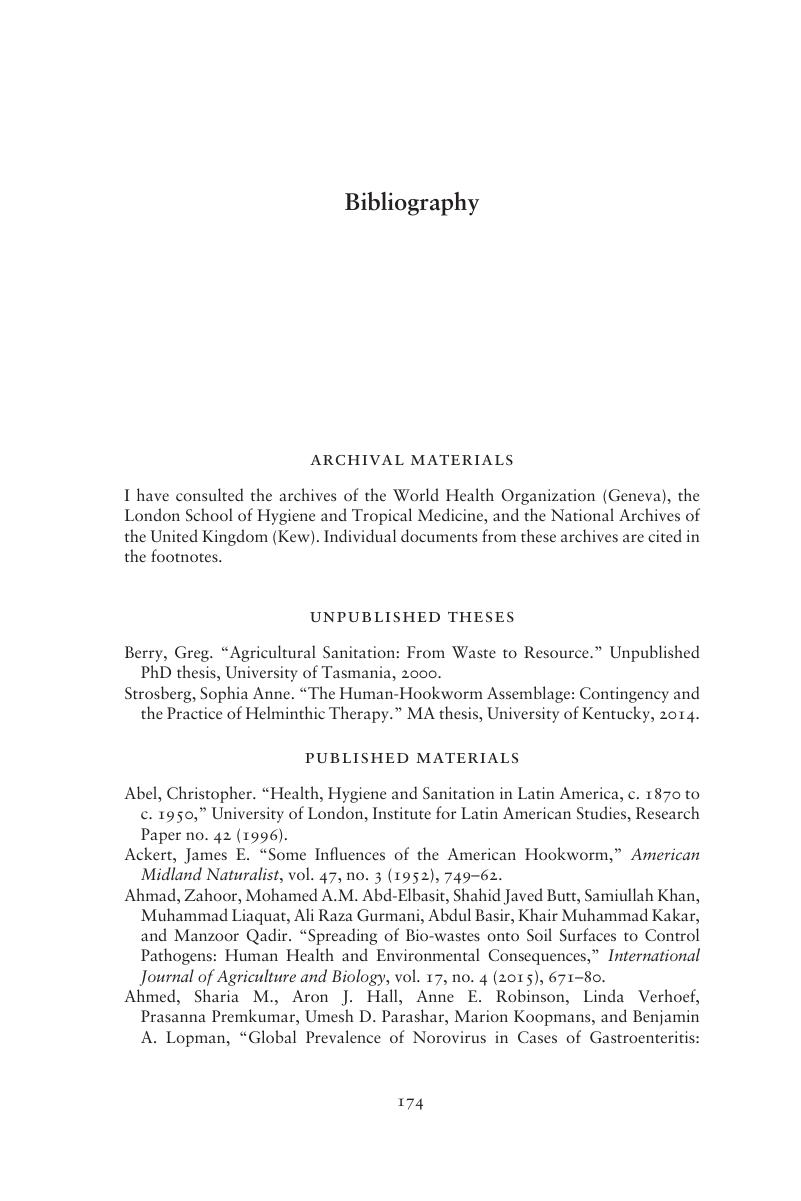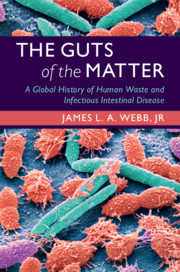Book contents
- The Guts of the Matter
- Studies in Environment and History
- The Guts of the Matter
- Copyright page
- Dedication
- Contents
- Figures
- Acknowledgments
- Introduction
- 1 Pathogens and Parasites
- 2 Early Change
- 3 Diffusion and Amplification
- 4 Innovations
- 5 Adoptions and Adaptations
- 6 The Struggle against Hookworm Disease
- 7 An Era of Optimism
- 8 Global Health and Infectious Intestinal Disease
- Conclusion
- Bibliography
- Index
- References
Bibliography
Published online by Cambridge University Press: 18 November 2019
- The Guts of the Matter
- Studies in Environment and History
- The Guts of the Matter
- Copyright page
- Dedication
- Contents
- Figures
- Acknowledgments
- Introduction
- 1 Pathogens and Parasites
- 2 Early Change
- 3 Diffusion and Amplification
- 4 Innovations
- 5 Adoptions and Adaptations
- 6 The Struggle against Hookworm Disease
- 7 An Era of Optimism
- 8 Global Health and Infectious Intestinal Disease
- Conclusion
- Bibliography
- Index
- References
Summary

- Type
- Chapter
- Information
- The Guts of the MatterA Global History of Human Waste and Infectious Intestinal Disease, pp. 174 - 203Publisher: Cambridge University PressPrint publication year: 2019



